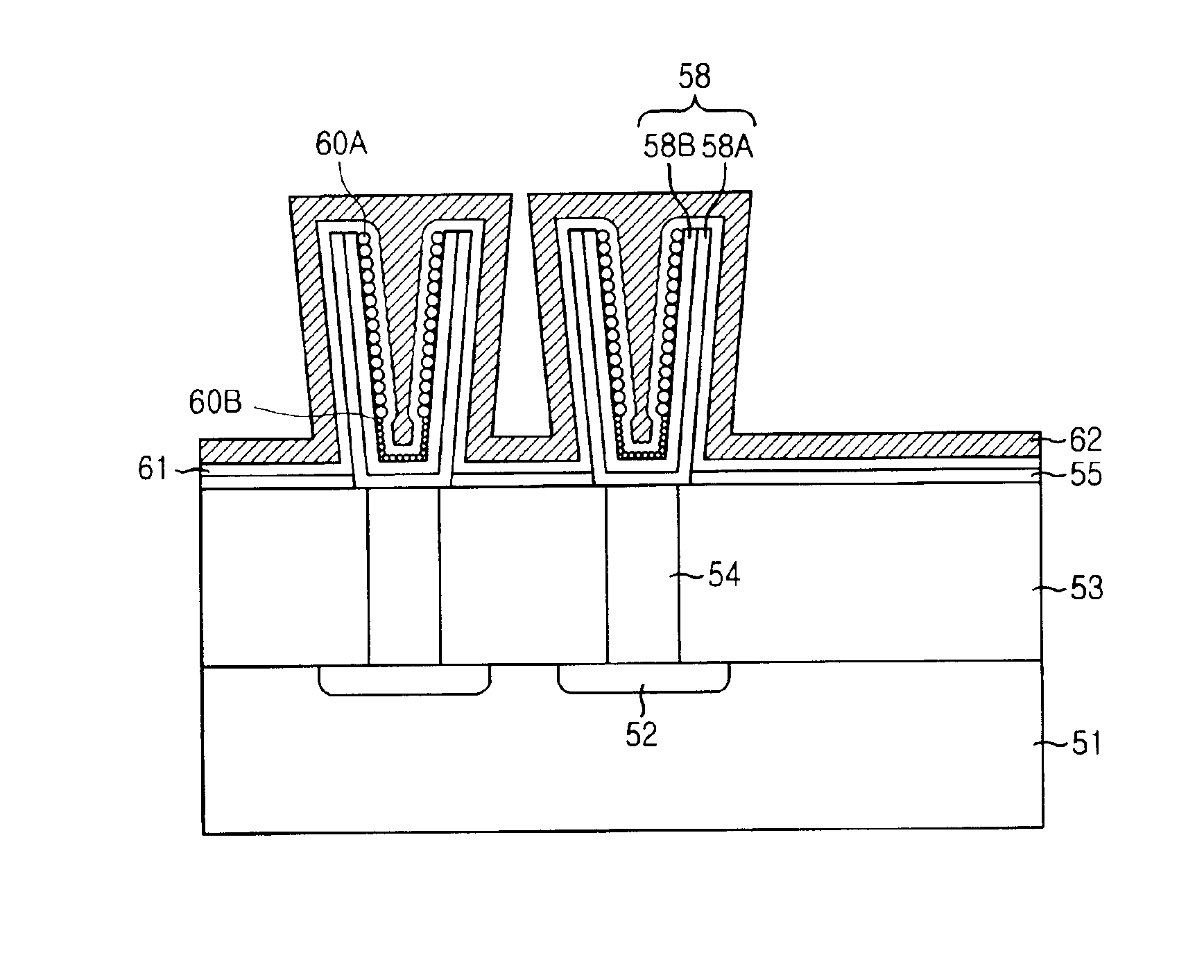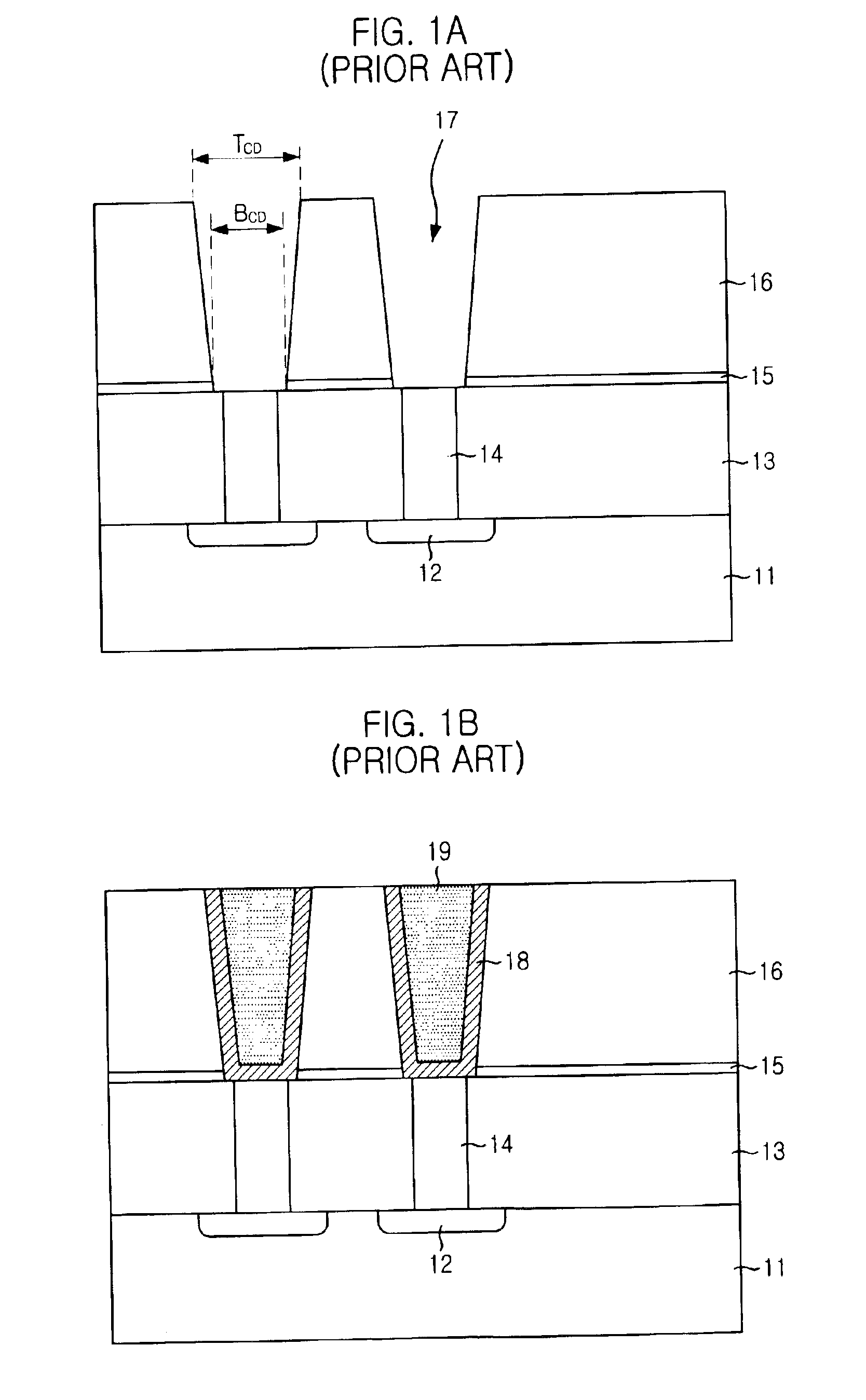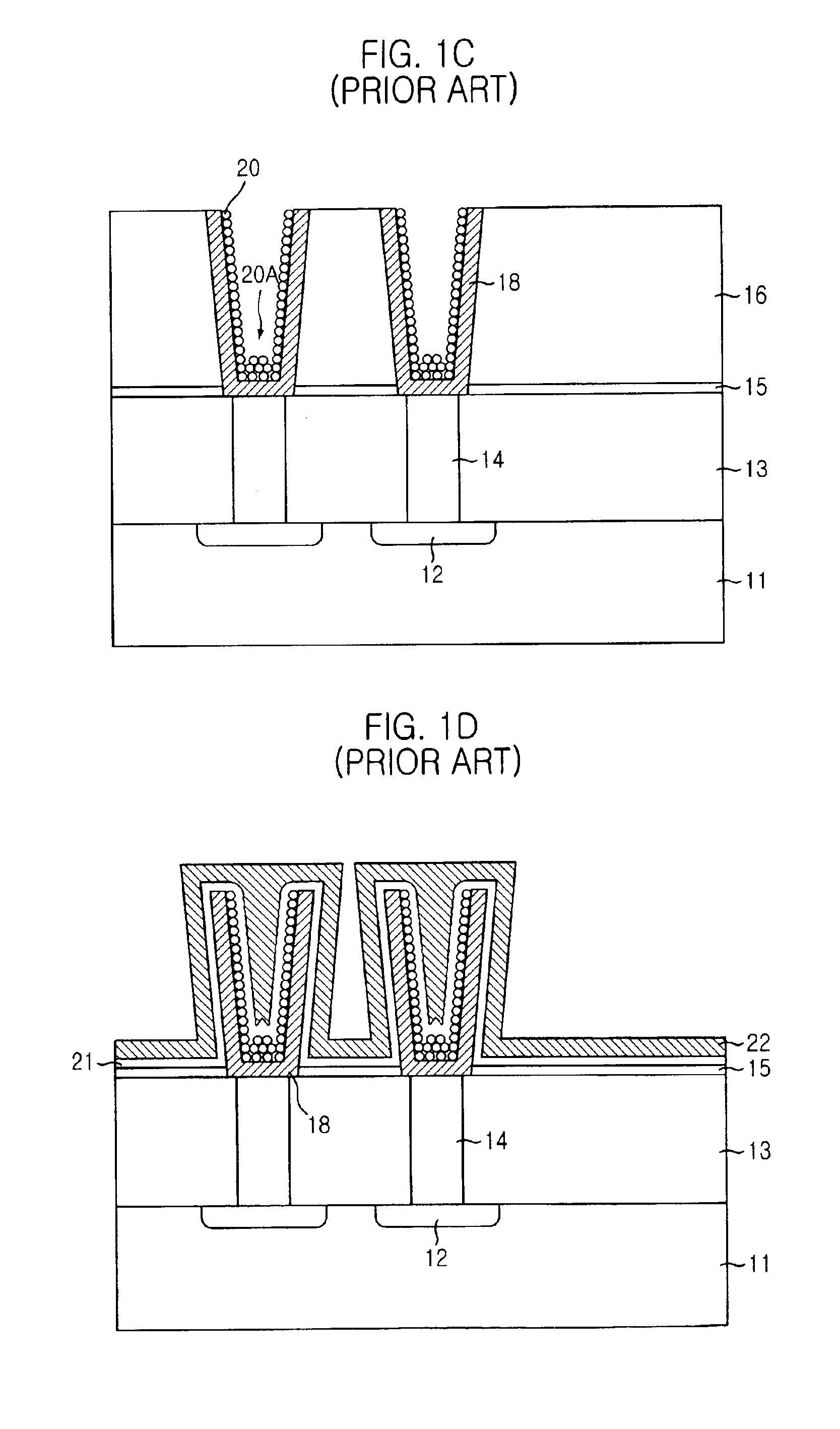Capacitor and method for fabricating the same
a technology of capacitors and capacitors, applied in the field of capacitors, can solve the problems of deterioration of cell critical dimension, short circuit between cylinders, and inability to apply the above method in practice,
- Summary
- Abstract
- Description
- Claims
- Application Information
AI Technical Summary
Benefits of technology
Problems solved by technology
Method used
Image
Examples
first embodiment
[0031]In accordance with the present invention, the MPS grains 40 are formed on a sidewall of the inner wall of the first electrode 38 except a bottom region, thereby securing capacitance of the capacitor sufficiently.
[0032]Referring to FIGS. 3A to 3G, there are shown cross sectional views illustrating a method for manufacturing a capacitor in accordance with a first preferred embodiment of the present invention.
[0033]Referring to FIG. 3A, the manufacturing process begins with preparation of a semiconductor substrate 31 having a conductive region 32 doped with impurities, i.e., source / drain region.
[0034]Thereafter, an ILD layer 33 is formed on the top face of the semiconductor substrate 31 and is patterned into a predetermined configuration by using a contact mask to form a contact hole till the contact hole is completely filled in. Next, a conductive layer is deposited on entire surface including the contact hole. Subsequently, a contact plug 34 is formed by using a technique such ...
second embodiment
[0052]In accordance with the present invention, the first electrode 58 includes the first region and the second region, wherein the first region has the second MPS grains 60B that are small enough to prevent the merging phenomenon and the second region has the first MPS grains 60A that are larger than those of the second MPS grains 60B. Therefore, it is possible to obtain a sufficient capacitance. Namely, the increment ratio of the cross section area of the first region is lower than that of the second region, wherein the increment ratio of the cross section area of the first region ranges from approximately 1.1 to approximately 1.5 and the increment ratio of the cross section area of the second region ranges from approximately 1.7 to approximately 2.0. Additionally, the second MPS grains 60B formed in the bottom area of the first electrode 58 are small enough to prevent the merging phenomenon, thereby having good step coverage of the dielectric layer 61.
[0053]Referring to FIGS. 5A ...
PUM
| Property | Measurement | Unit |
|---|---|---|
| capacitance | aaaaa | aaaaa |
| dielectric constant | aaaaa | aaaaa |
| dielectric constant | aaaaa | aaaaa |
Abstract
Description
Claims
Application Information
 Login to View More
Login to View More - R&D
- Intellectual Property
- Life Sciences
- Materials
- Tech Scout
- Unparalleled Data Quality
- Higher Quality Content
- 60% Fewer Hallucinations
Browse by: Latest US Patents, China's latest patents, Technical Efficacy Thesaurus, Application Domain, Technology Topic, Popular Technical Reports.
© 2025 PatSnap. All rights reserved.Legal|Privacy policy|Modern Slavery Act Transparency Statement|Sitemap|About US| Contact US: help@patsnap.com



